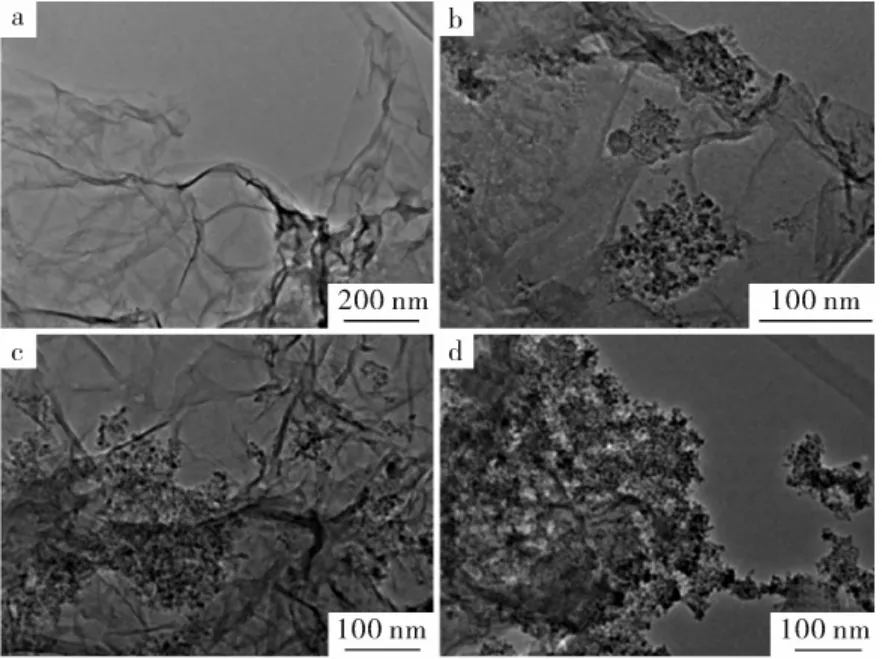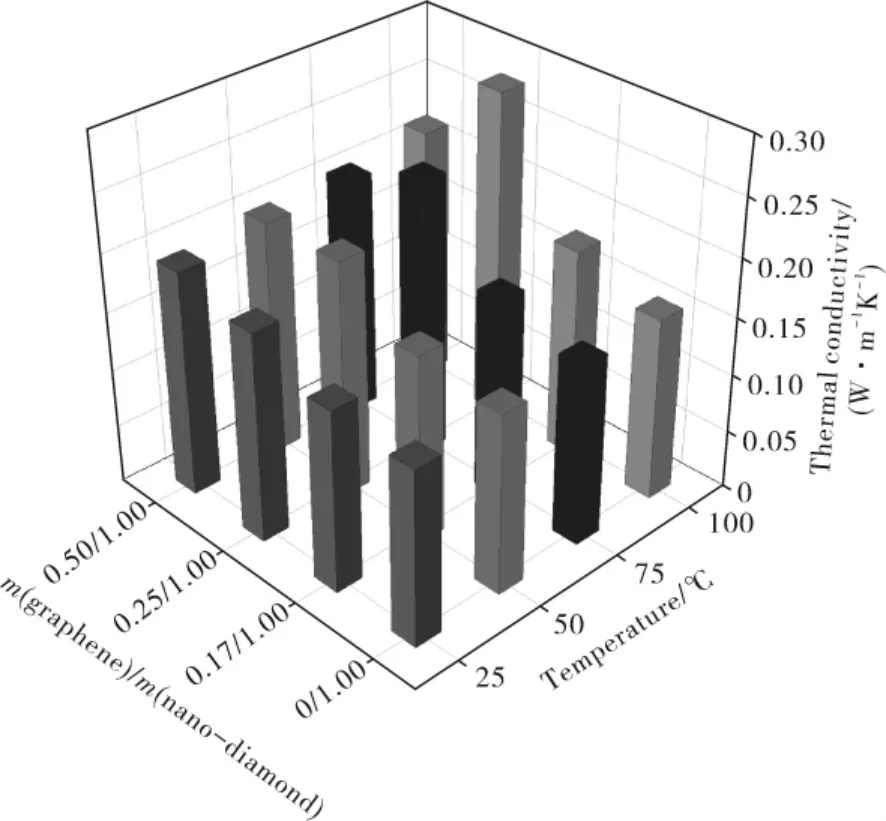Preparation and properties of graphene-nano-diamond hybrid/silicone rubber composites
2024-04-01ZHAOWenTANGQiXUYinuoJIZeyngCAOLnZONGChengzhong
ZHAO Wen, TANG Qi, XU Yi-nuo, JI Ze-yng, CAO Ln, ZONG Cheng-zhong*
(a. School of Polymer Science and Engineering; b. Sino-German College of Engineering,Qingdao University of Science and Technology, Qingdao 266042, China)
It has been proved that adding a single type of thermal conductivity filler is challenging to achieve a high theoretical thermal conductivity value of polymer composites.However,adding mixed thermal conductive fillers of different shapes to the polymer matrix makes it easier to form a thermally conductive path or reduce the voids in the matrix[1].Hence,the polymer composite material has better thermal conductivity than the singleshape thermal conductive filling material.In this work,a structurally stable graphene-nano-diamond hybrid (GND) is obtained by taking advantage of dopamine's adaptability to almost any expression.Graphene is a two-dimensional material,while nano-diamond is a zero-dimensional material.They can produce cooperative thermal conductivity when both are added to the polymer matrix simultaneously.Moreover, nano-diamond and silicone rubber (SR) can block the conductive path of graphene and prepare thermal-insulating SR composite materials.
As seen in Fig 1(a),the graphene is transparent with some folds on the surface.As shown in Fig 1(b),(c)and(d),there are many small particles on the surface of graphene,which are nano-diamonds,indicating that the preparation of GND hybrid materials is successful.The nano-diamond is fully loaded on the surface when more graphene exists,shown in Fig 1 (b).When there is less graphene, some nano-diamond particles hang outside the graphene lamella and are scattered around the graphene, and the nano-diamond agglomeration is severe.

Fig 1 Surface morphology of graphene and GND hybrid materials with different m(graphene)/m(nano-diamond)
As shown in Fig 2,the thermal conductivity of SR composites with GND of m(graphene)/m(nano -diamond) 0/1.00 added is unchanged with the temperature increase.However,the thermal conductivity of SR composites with GND of m(graphene)/m(nano -diamond) 0.17/1.00, 0.25/1.00, and 0.50/1.00 added increases with the increase in temperature.GND [m(graphene)/m(nano-diamond) 0.25/1.00] / SR composite shows the most obvious increasing trend, and the thermal conductivity at 100 ℃is 56%higher than that at 25 ℃.At 25,50,75,100 ℃,the thermal conductivity of GND [m(graphene)/m(nano -diamond) 0.25/1.00]/SR composite is increased by 20.5% ,32.6%, 52.8% and 79.2%, respectively, compared with GND[m(graphene)/m(nano-diamond)0/1.00]/SR composite.

Fig 2 Thermal conductivity of GND/SR composites at different temperatures
